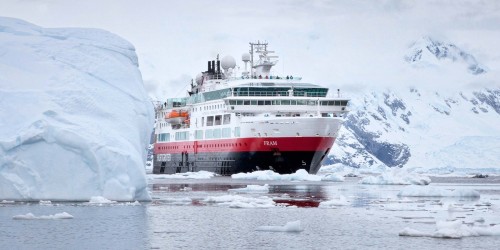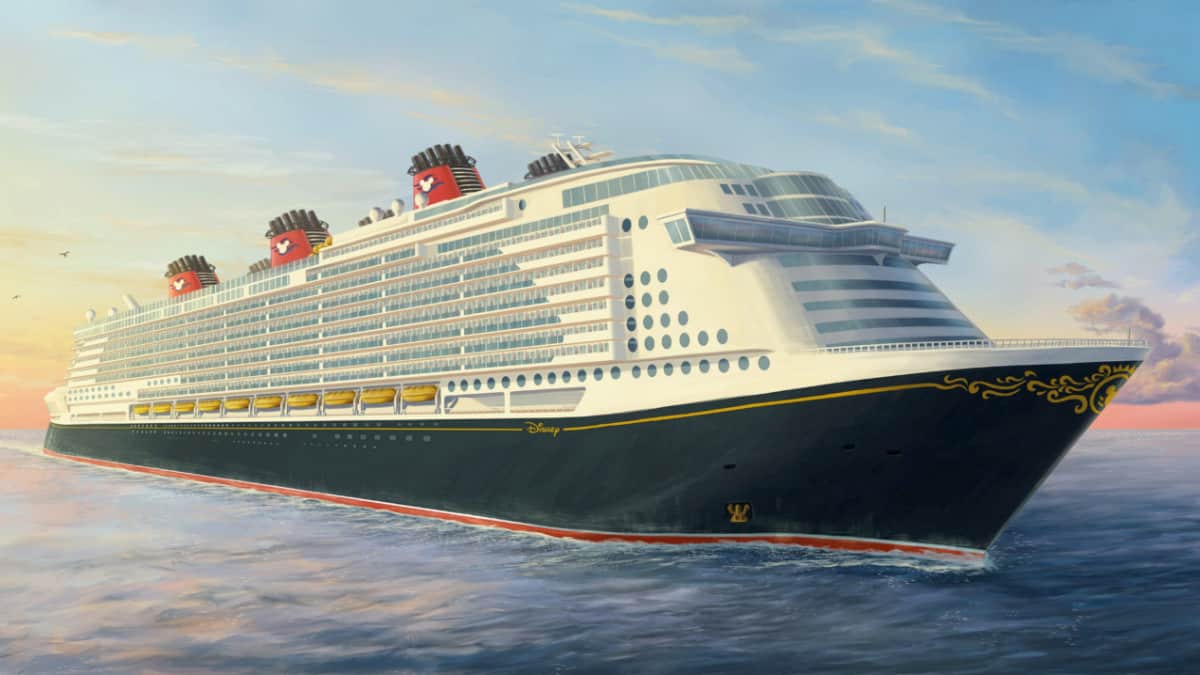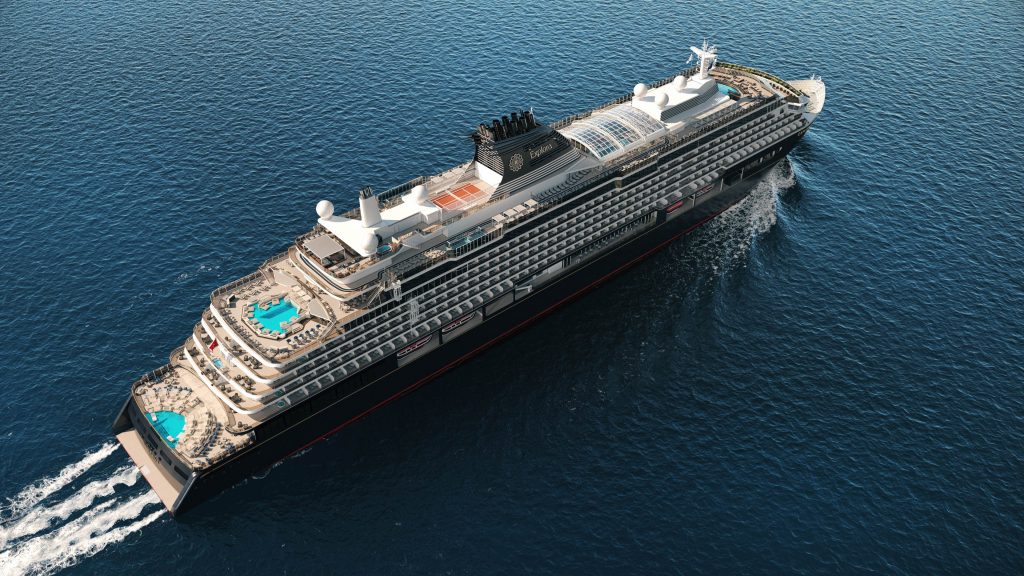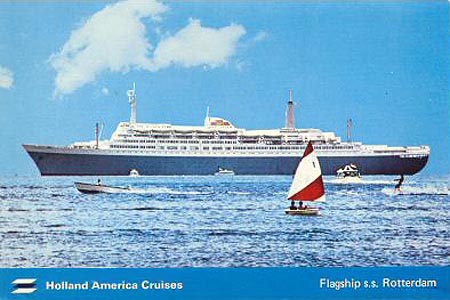The Hurtigruten company, which is the result of a merger between two Norwegian shipping companies, OVDS & TFDS, has been operating ships on expedition cruises in the Polar regions since about the turn of the century, almost twenty years now. The company set out to be the market leader in polar expedition cruising and is doing well with more dedicated expedition cruise ships coming on line, like Roald Amundsen and Fridtjof Nansen this year and in 2020 and a third vessel on order.
In 2007, to make a significant leap forward to a market share of 20% in expedition cruising for 2008, Hurtigruten ordered a new vessel from the Italian ship yard Fincantieri at a cost of 68 mio euro on September 9th 2005. The ships keel was laid on August 2006 and just three months later she was floated out the building dock. Again five months later she was handed over to her owners and christened Fram.

Her maiden voyage was split up in 4 parts, connecting the ship which was named after the the famous expedition vessel Fram of 1892 used during the voyages of Roald Amundsen and Fridtjof Nansen. Farm meaning “forward” in Norwegian. In her 22 years of service, the original Fram travelled towards the North Pole with explorer Fridtjof Nansen and they came close but didn’t make it past the latitude of 86th degree. Two more voyages thye made, one to Greenland and North Canada and one (her last) with famous world-traveller Roald Amundsen to Antarctica. Since 1936, the orginial Fram is on display at the Polar Exploration museum in Oslo. The current Fram 0f 2007 is a small cruise-ship, compared to the most recent series of Finnmarken, Nordnorge and Nordkapp, although their interiors were used as the starting point of Fram’s design. She is the first Hurtigruten vessel used for cruising year -round as all other vessels of the company are at least part of the year active in the Hurtigruten coastal-express service. Along the Norwegian coast. However, she did have a garage for 25 cars which could be loaded through a ramp on the port side of the vessel. This space is now used to store all kinds of expedition equipment.
Fram is also the first Hurtigruten vessel built to ice class 1B specifications. When off loading passengers in the Antarctic region, a maximum of 100 passengers are allowed ashore at the same time, which is arranged by ferrying passengers across from the ship corresponding to the ships 3 cabin decks, one deck at a time.
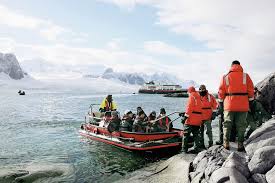
Part of the year she sails to the coast of Greenland and sets sail to Antarctica via the USA, through the Panama Canal and the west coast of South America to finally reach the most southern port of the world, Ushaia, Argentina, where she is based for her Antartic cruises.
Hurtigruten has experience both in the northern and southern polar regions. In earlier days, for cruising along the coast of Greenland, the company had chartered the small expedition vessel DISKO for a few years and of course the small Nordnorge. Nordkapp and Trollfjord have sailed from Ushaia to Antarctica. On top of this, their classic Nordsjternen and Lofoten have been used for cruising from Norway to Spitsbergen.
On the technical site, the Hurtigruten company specifies that The ship is “fully equipped for service as an expedition cruise ship having chart drawing tools, ship depth sounding database, extractable forward sounding sonar, iceberg search lights, autonomous tracking system, oversized oil retention system for self-sufficiency”.

For a ship of Fram’s size, passengers have spacious outside decks to their disposal, and even the bow of the ship is -weather permitting- open for passengers to view the scenery first hand. On her top deck, apart from the indoor sauna, outside jacuzzi’s make it possible to enjoy the scenery while sitting in the hot tubs…. Even the gym has panoramic windows, so during their work out, passengers will miss nothing of the spectacular surroundings.
Fram has subdued, classy interiors done in Scandinavian style, a bit more “cruise ship style” than her larger predecessors, which as said before fulfilled a double-role as expedition cruise ships and working ships on the Norwegian coastal express run. Passengers make expedition cruises out of interest in the scenery and nature and are eager to learn about this unique polar environment. So instead of glitzy interiors and entertainment, Fram offers in-depth lectures given by well-known scientists.

The ships highlight is of course her observation lounge sitting atop the ship. Her large panoramic windows offer great views of the polar surroundings and even a pair of binoculars is installed for spotting wildlife.
Speaking about spotting wildlife, the dining room on deck 5 features a balcony where it is possible to view wildlife showing up during meal time.
Fram has 127 suites (named after famous polar explorers) and cabins which will receive a total make over when the ship is refitted and upgraded in 2020.
Also her public spaces will be upgraded, like her dining room which will be transformed to Restaurant Aune, Hurtigruten’s new expedition cruise main restaurant concept. The restaurant will have an informal, Scandinavian style.

Completely new will be the Lindstrøm specialty restaurant (named after the favorite chef of the Norwegian polar heroes). Lindstrøm will be a fine dining restaurant offering traditional Norwegian food. Adjacent to Lindstrom, a champagne and cocktail lounge will be created.
Her Qilak observation lounge will be redone and will be renamed Explorer Lounge & Bar and finally a new Science-center, which is a Hurtigruten special present on all expediton vessels of the company will be installed. It will feature state-of-the-art technology like touch screens, science equipment and different interactive features. Hurtigruten calls this the “edutainment area giving passengers a deeper understanding for the areas MS Fram explores”.

Of course, when drydocjed, Fram’s engines will be upgraded to the highest environmental standards (tier 3).
In this way, Hurtigruten -on it’s way to firmly establishing itself as the leading operator of polar region expedition cruises- focuses on being as environmentally friendly as possible. When the company celebrated its 125th anniversary it introduced a ban on all single-use-plastics. An another industry first is of course that Hurtigruten is completely rebuilding existing ships to run on a combination of electricity in the form of large battery packs, biogas and liquified natural gas.

